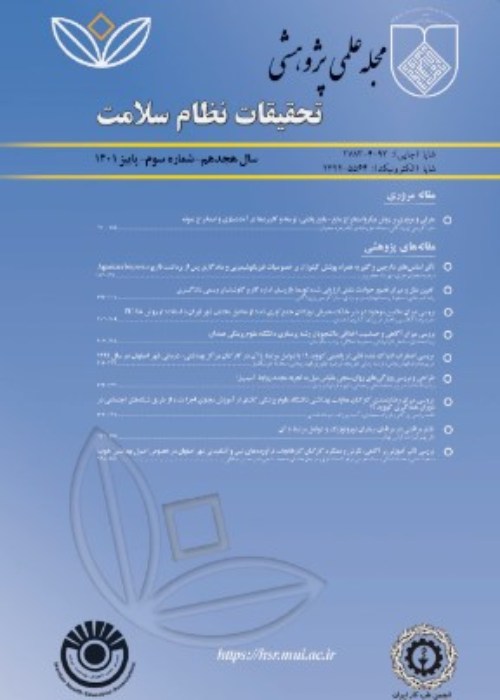Health Belief Model-Based Education & Reduction of Cesarean among Pregnant Women: An Interventional Study
Author(s):
Abstract:
Background
Noorabad-e-Mamasani has the highest rate of delivery by cesarean section in Fars province. Cesarean section, as a large surgical operation, is accompanied with some side effects that sometimes get very dangerous and rarely lethal. The present investigation aims to determine the effects of a health belief model-based educational intervention on decreasing cesarean sections among the mentioned city's pregnant women in 2009.Methods
In this quasi-experimental study, 100 primiparous pregnant women, in their third trimester, were randomly categorized into two groups of case and control.The educational plan was designed based on the health belief model (HBM). Before implementation of the educational plan, a questionnaire, based on the HBM structures, was completed by the two groups. The case group received HBM-based education (6 educational sessions during three consecutive days). Pregnant women of the both groups completed the questionnaire for a second time 4-8 weeks after the intervention.The collected data was analyzed using SPSS 14 software and by independent-t, t-paired, chi- square, Wilcoxon, and Mann Whitney statistical tests. Participation of individuals in this study was voluntarily and with informed consents.Findings
Findings of the present research showed a meaningful difference in the mean scores of awareness (P < 0.001), perceived susceptibility (P < 0.001), perceived benefits (P < 0.001) and perceived self-efficacy (P = 0.02) between the two groups after the intervention. However, no significant difference was observed between the two groups about perceived barriers (P = 0.09), intention for choosing the delivering type (P = 0.73), and behavior (P = 0.24) after the intervention.Conclusion
Results of this study indicated the effectiveness of health belief model-based educational plan on increasing the awareness and attitudes of pregnant women towards delivery. However, considering the numerous factors that may affect choice of delivery method, increased awareness and attitudes do not necessarily lead to the desired behavior. Therefore, in order to boost the efficiency of this model, it is important to take advantage of other models that influence health policy making and abstract norms.Language:
Persian
Published:
Journal of Health System Research, Volume:7 Issue: 2, 2011
Page:
189
magiran.com/p914949
دانلود و مطالعه متن این مقاله با یکی از روشهای زیر امکان پذیر است:
اشتراک شخصی
با عضویت و پرداخت آنلاین حق اشتراک یکساله به مبلغ 1,390,000ريال میتوانید 70 عنوان مطلب دانلود کنید!
اشتراک سازمانی
به کتابخانه دانشگاه یا محل کار خود پیشنهاد کنید تا اشتراک سازمانی این پایگاه را برای دسترسی نامحدود همه کاربران به متن مطالب تهیه نمایند!
توجه!
- حق عضویت دریافتی صرف حمایت از نشریات عضو و نگهداری، تکمیل و توسعه مگیران میشود.
- پرداخت حق اشتراک و دانلود مقالات اجازه بازنشر آن در سایر رسانههای چاپی و دیجیتال را به کاربر نمیدهد.
In order to view content subscription is required
Personal subscription
Subscribe magiran.com for 70 € euros via PayPal and download 70 articles during a year.
Organization subscription
Please contact us to subscribe your university or library for unlimited access!



